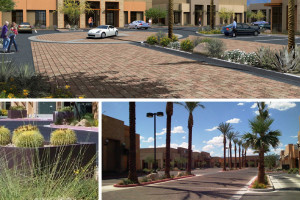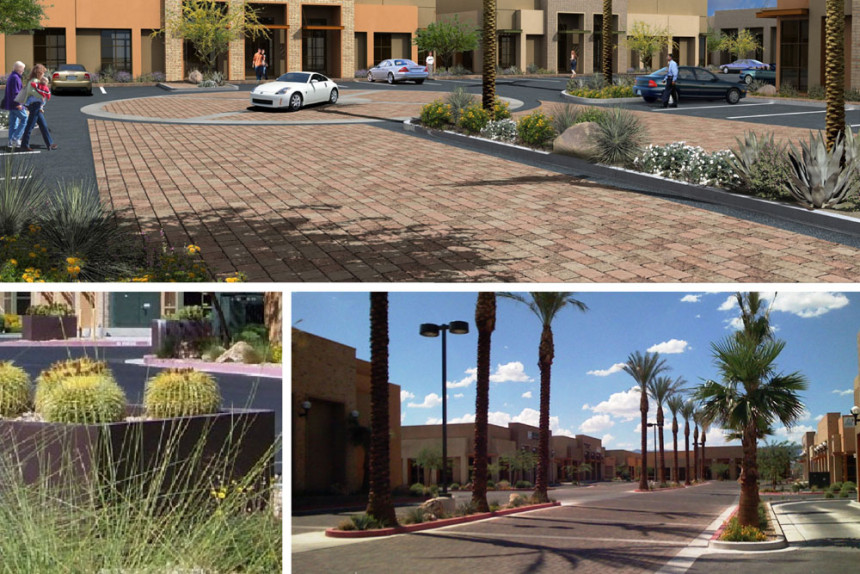Creating outdoor spaces: Tips for residential landscape architecture and design

Your outdoor space is an extension of your home, offering a sanctuary for relaxation, entertainment, and connection with nature. A well-designed residential landscape can not only enhance the beauty and functionality of your property but also increase its value. Whether you have a sprawling backyard or a cozy urban garden, here are some valuable tips to consider when designing your outdoor oasis.
1. Define your purpose
Before you dive into the design process, it’s essential to identify the primary purpose of your outdoor space. Are you looking to create a peaceful retreat for reading and meditation, a vibrant entertainment area for gatherings, or a functional space for gardening and outdoor activities? Defining your goals will guide your design choices.
2. Plan for zones
A well-designed outdoor space often includes distinct zones or areas for various activities. Common zones may include a dining area, a lounging area with comfortable seating, a play area for kids, and a garden or green space. Separating these zones with hardscape features, like pathways or low walls, can help create visual boundaries and define each area’s purpose.
3. Choose quality materials
When selecting materials for your landscape, prioritize quality and durability. High-quality materials may have a higher upfront cost but often require less maintenance and last longer, ultimately saving you time and money in the long run. Consider natural stone, hardwood, or composite decking for patios and walkways.
4. Embrace native plants
Native plants are well-suited to your local climate and soil conditions, making them easier to maintain and more environmentally friendly. They also provide essential food and habitat for local wildlife. Incorporate native plants into your landscape to create a sustainable and low-maintenance garden.
5. Balance hardscape and softscape
A successful landscape design strikes a balance between hardscape (structures and non-living elements) and softscape (plants and living elements). Too much hardscape can make your outdoor space feel cold and uninviting, while an abundance of softscape may require excessive maintenance. Finding the right balance ensures an aesthetically pleasing and manageable space.
6. Consider privacy
Privacy is a crucial consideration for many homeowners. Depending on your location and layout, you may want to incorporate privacy features like fences, screens, or strategically placed plants to create a secluded atmosphere where you can relax without feeling exposed.
7. Outdoor lighting
Outdoor lighting extends your outdoor space’s usability into the evening and adds an inviting ambiance. Try combining functional and decorative lighting, such as pathway lights, spotlights for focal points, and string lights for a cozy atmosphere.
8. Sustainable design
Sustainability is becoming increasingly important in landscape design. Implement environmentally friendly practices by using permeable paving materials to reduce water runoff, incorporating rain gardens to manage stormwater, and installing an efficient irrigation system that conserves water.
9. Professional consultation
While many homeowners enjoy DIY landscaping, your project may benefit from professional consultation. Our landscape architects at McNeil Engineering can offer expertise in planning, plant selection, and hardscape design, ensuring that your outdoor space meets your needs and expectations.
10. Maintenance plan
Don’t forget to consider the ongoing maintenance of your landscape. Develop a maintenance plan that includes regular tasks like weeding, pruning, and lawn care. Proper maintenance will help preserve the beauty and functionality of your outdoor space.
11. Incorporate water features
Water features like ponds, fountains, or waterfalls can create a sense of serenity and a focal point in your landscape. The soothing sound of running water can also mask street noise and enhance the overall ambiance of your outdoor space.
12. Think about seating
When planning your outdoor living areas, think about the types of seating that best suit your needs. The right seating can elevate comfort and functionality from cozy benches and lounge chairs to outdoor sofas and dining sets.
13. Plant for all seasons
Strive for year-round beauty by selecting a variety of plants that bloom and thrive in different seasons. This ensures that your landscape remains visually appealing and inviting throughout the year.
14. Green walls and vertical gardens
In smaller spaces, consider vertical gardens or green walls. These designs help maximize greenery, provide an eye-catching focal point, and improve air quality.
15. Fire pits and outdoor fireplaces
Extend the usability of your outdoor space into cooler seasons with a fire pit or outdoor fireplace. These features provide warmth and create a cozy atmosphere for gatherings.
16. Accessibility and inclusivity
Design your landscape to be accessible to all family members, including those with mobility challenges. Incorporate ramps, wider pathways, and accessible seating to ensure everyone can enjoy the space comfortably.
17. Local regulations and permits
Be aware of local regulations and permitting requirements for your landscape project. At McNeil Engineering, we can help ensure your design complies with local codes and zoning regulations.
18. Drought-resistant landscaping
Consider drought-resistant plants and xeriscaping principles to create an environmentally sustainable landscape that conserves water and requires less maintenance.
19. Preserve existing trees
If you have mature trees on your property, make an effort to preserve them. Mature trees add character to your landscape and provide valuable shade and environmental benefits.
Incorporating these tips into your residential landscape design can result in a stunning outdoor space that enhances your quality of life and adds value to your property. If you’re seeking professional guidance for your landscape project, don’t forget to consider consulting us at McNeil Engineering!
McNeil Engineering offers a range of services, including landscape architecture and structural engineering, to help you bring your outdoor design vision to life. With our expertise and commitment to high-end architectural solutions, we can provide the approach needed to create a landscape that meets your aesthetic goals and adheres to safety and sustainability standards.
Whether you’re planning a complete landscape makeover or need assistance with specific design aspects, we can be your trusted partner in creating the perfect outdoor space. Contact us today to explore how our services can contribute to the success of your latest project.

